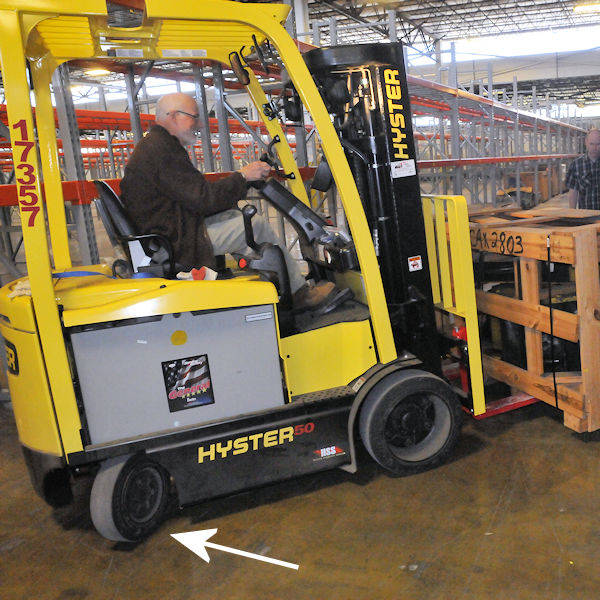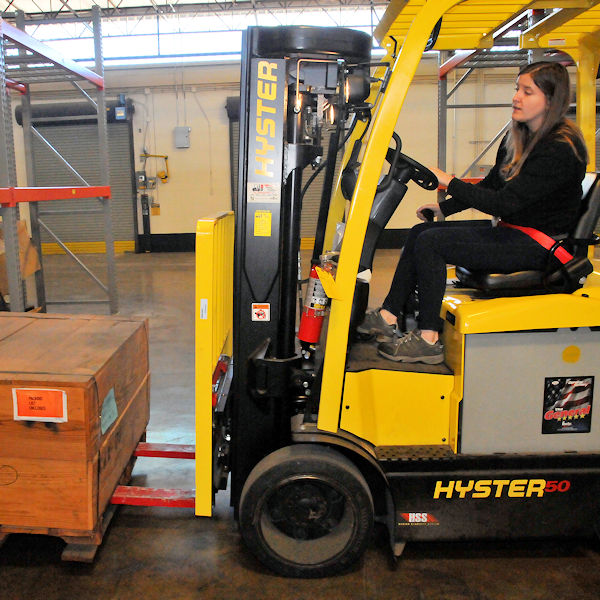Operating The Forklift
In a car or truck, the front wheels steer the vehicle, but forklifts are different.
A forklift has the steering wheels at the rear, allowing it to swing in a circle around the front wheels that support most of the load. This allows the forklift to rotate the load into the correct position.
The operator must check that there is room for the rear end to swing when making turns. This clearance can be maintained in your workplace by permanently marking aisles with painted lines or by arranging storage racks to create obvious travel aisles. However, these marked aisles will only be effective if they are kept clear of stored materials that can gradually encroach as space is needed.
A forklift is not as responsive as a car when the steering wheel is turned. Rear steering makes it difficult to stop a forklift quickly, swerve, and maintain control. As a result, it is important not to drive a forklift fast or round corners quickly.
Workplace Conditions
Workplace surface and overhead conditions are an important part of safe lift truck operation.
Operating surfaces must be strong enough to support the forklift, its load and its operator. They must also be free of holes, grease, oil or obstructions that could cause the lift truck to skid, bounce, and/or possibly tip over.
Workplace surface and overhead conditions and factors to consider when traveling include:
- Slippery Conditions: There is a danger of skidding when traveling on oil, grease, water or other spills. A forklift could tip over when traveling on ice, snow, mud, gravel and uneven areas.
- Obstructions and Uneven Surfaces: There is a danger of tip over when traveling over obstructions, holes and bumps.
- Floor Loading Limits: There is a danger of the floor collapsing if it's unable to support the weight of the forklift, load, and operator.
- Overhead Clearance: There is a chance of damage to lights, stacks, doors, sprinklers and pipes. Damage to the load may also occur, and the forklift may tip over when traveling and hitting an overhead obstruction.
Failure to Wear Seatbelt Causes Fatal Forklift Accident
An August 29, 2023 fatality may have been prevented if the employer had ensured proper operation of forklifts. An Airport Technical Services’ employee was attempting to drive a forklift into a building when the vehicle’s forks and mast struck the overhang of the entrance, causing the forklift to tip over. The operator, who was not wearing a seatbelt, fell to the ground, and the tipping forklift fatally struck him.
OSHA inspectors found that the company failed to ensure the worker wore a seat belt while operating the forklift, exposing him to rollover and crushing hazards. The agency also determined the following:
- The forklift’s forks and mast were not raised only as far as necessary to clear the road surface.
- All forklift operators were not properly trained and certified.
- A damaged forklift was not examined before being placed in service.
- A damaged forklift was not taken out of service.
Knowledge Check Choose the best answer for the question.
2-1. A forklift has the steering wheels _____ so it can rotate the load into the correct position.
You forgot to answer the question!


